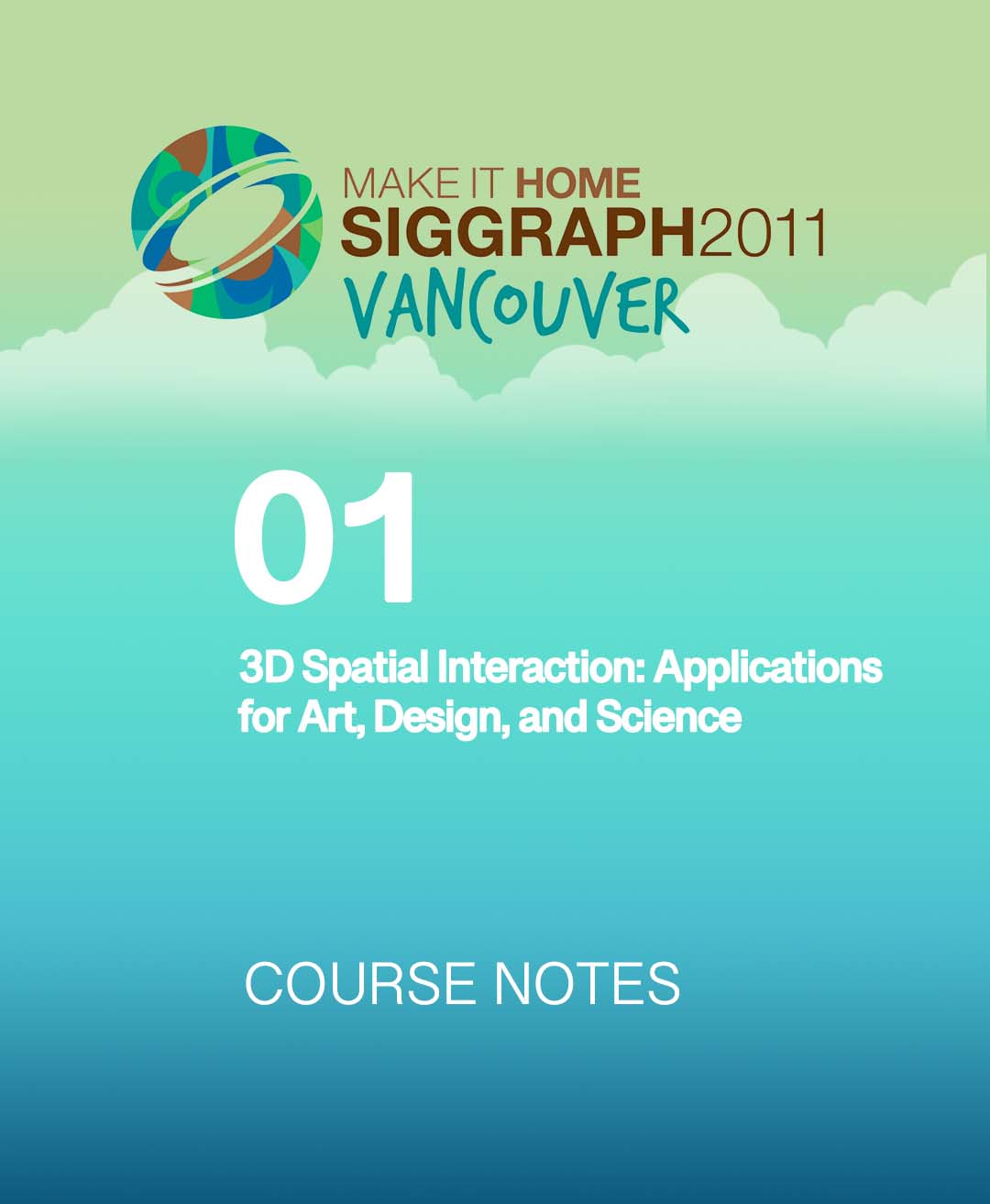“3D Spatial Interaction: Applications for Art, Design, and Science” by LaViola and Keefe
Conference:
Type(s):
Entry Number: 01
Title:
- 3D Spatial Interaction: Applications for Art, Design, and Science
Course Organizer(s):
Presenter(s)/Author(s):
Abstract:
Prerequisites
Introductory computer graphics and linear algebra.
Who Should Attend
Anyone interested in learning about the changing landscape of 3D spatial interfaces and their potential roles in many fields, including researchers, artists, designers, scientists, developers, and hobbyists.
Description
3D interfaces use motion sensing, physical input, and spatial interaction techniques to effectively control highly dynamic virtual content. Now, with the advent of the Nintendo Wii, Sony Move, and Microsoft Kinect, game developers and researchers must create compelling interface techniques and game-play mechanics that make use of these technologies. At the same time, it is becoming increasingly clear that emerging game technologies are not just going to change the way we play games, they are also going to change the way we make and view art, design new products, analyze scientific datasets, and more.
This introduction to 3D spatial interfaces demystifies the workings of modern videogame motion controllers and provides an overview of how it is used to create 3D interfaces for tasks such as 2D and 3D navigation, object selection and manipulation, and gesture-based application control. Topics include the strengths and limitations of various motion-controller sensing technologies in today’s peripherals, useful techniques for working with these devices, and current and future applications of these technologies to areas beyond games. The course presents valuable information on how to utilize existing 3D user-interface techniques with emerging technologies, how to develop interface techniques, and how to learn from the successes and failures of spatial interfaces created for a variety of application domains.




